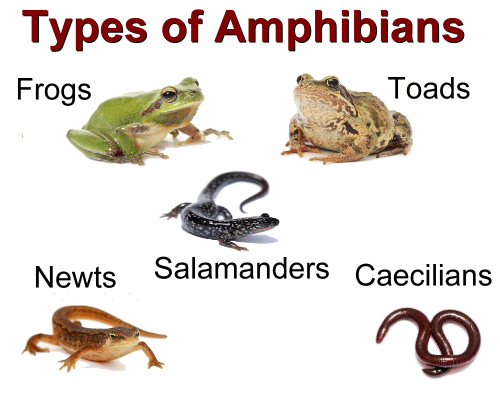 According to the taxonomy of living things, the phylum chordata (animals with backbones) is divided into five classes: fish, amphibians, reptiles, mammals and birds. The class of amphibians includes frogs, toads, salamanders, newts and caecilians.  An amphibian is a cold-blooded vertebrate born in water where it breathes through gills. As the larva undergoes metamorphosis and develops into an adult, its lungs gain the capacity to breathe air, and the animal can survive on land. As an example, here are the stages in the life cycle of a frog. An adult frog will lay up to 1500 eggs at a time, which then group together in a jelly-like substance and float on the water surface until they hatch in about 1-3 weeks. Emerging from the eggs, the larval form, called a tadpole, will first develop gills, then legs. It will then grow arms and become a froglet. Finally it will absorb its tail back into its body to become an adult frog. The entire process takes approximately 12 weeks from eggs to adult.  Characteristics of Amphibians
|